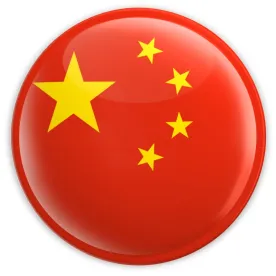China clearly wants to use its enormous financial capacity to secure access to resources, to create good jobs for its huge population, to enhance its strategic clout and to spur global growth in ways that shore up growth at home. Certainly, this is true of China’s engagement with the Middle East, from which it obtains over half of the oil and gas which helps feed a fast-growing energy demand. China’s recent launch of ambitious — some say grandiose — plans for a new land and maritime “Silk Road” economic corridor of infrastructure and finance to better link Asia, the Middle East and Europe to China is core to this approach. China seeks to accomplish this golden vision without intruding upon or becoming overly enmeshed in the complex political divisions, rivalries and conflicts which permeate the Middle East. Yet, those very complexities have long impeded economic growth and diversification in a region that remains one of the least economically-integrated and diversified in the world.
Some fear that China may succeed, and undercut the influence of the US and others who would promote rule-of-law, competition-based commerce, transparency and good governance in the region. Others — focused on the current pressures of extremism and instability on the region and nearby — hope that China’s new Silk Road, influence and self-interest will help to distract (if not dissuade) regional players from their aggressive focus on differences and zero-sum advantages. It must be understood that China is acting strategically to mitigate and diversify away from risk of moving fuel and goods through unstable, unsecured or unfriendly corridors. From that, China will not be deterred. Rather than speculate or hope about the impacts, we might best start with understanding as far as possible what the strategy entails, and what factors drive and affect it.
China’s oil imports, especially from Russia, have risen dramatically in recent years, in part to diversify from Middle East and African sources. But China can see that Russia uses oil and gas like a baseball bat, powerfully and with intent. The two also compete for influence in Central Asia. Not coincidentally, China re-launched its Silk Road initiative in 2013 in Central Asia, after Russia rejected China’s offer of a Shanghai Cooperation Organization only to form its own Eurasian Customs Union without China. China also hopes that promoting trade (and related infrastructure) between its under-developed westernmost provinces which border Central Asia (and where Muslim Uighur minorities live) and Central Asia and the Middle East will, among other things, help to ease serious domestic tensions involving Uighur minorities. Notably, the U.S. has its own commerce-based Central Asia “New Silk Road” initiative involving Afghanistan, similar to China’s in some respects, including, for example, investment in regional power grids.
China plans new land and water routes that would knit together four continents, potentially involving 65 countries and 4 billion people. China hopes that Silk Road investments will deliver an additional $2.5 trillion in trade within 10 years. If so, there might just be some opportunity and diverse benefits for the U.S., the EU and the global economy. The land route is to run from central China to the border with Kazakhstan, then southwest to Iran before passing through Iraq, Syria and Turkey. The new Silk Road would cross the Bosphorus and continue through Europe — Bulgaria, Romania, the Czech Republic, Germany and the Netherlands, and south to Venice where it is to converge with the planned maritime route running from Fujian through other southern Chinese ports before crossing the Malacca Strait via Kuala Lumpur and the Indian Ocean to Nairobi then around the Horn of Africa into the Mediterranean to end in Greece. China aims to create networks of infrastructure — railway, ports, power, pipelines and internet — and to promote use of its renminbi currency (now the world’s second-most used) and financial system in regions through which the Silk Road runs. In April, China established a renminbi clearance center in Qatar, which supplies 20 percent of China’s natural gas, to provide the region with access to China’s currency and foreign exchange markets.
Already China’s trade with the Middle East has increased more than 600% in the past decade to well over $200 billion per year. In 2015, China became the world’s largest crude oil importer, and its imports from the Middle East are expected to double in 20 years. With U.S. crude purchases sharply down, the Middle East also has turned towards China. Since 2012, almost every leader of a major Middle East country has visited China, and billions of dollars in China’s investments and products are visible in Egypt, Saudi Arabia and throughout the region. As yet, China’s leaders have studiously avoided travel to the region. Chinese conglomerate CITIC Ltd. has just ponied up $113 billion for investment in the Silk Road. The China Development Bank and its Export-Import Bank (along with the new Asian Infrastructure Investment Bank) are set to help finance key project components, just as Congress pulls the plug on U.S. Exim-Bank.
Nonetheless, China will face challenges. China’s plan for a large, energy-relevant port in the Crimea has already been derailed. China’s disengaged stance in the fight against ISIS is causing some heartburn. In 2012, Chinese flags were burned in Arab capitals when China vetoed calls for Assad’s removal in Syria. There is discomfort for some in the region with China’s treatment of its Muslim Uighurs, and — for those still hoping for an Arab Spring — its penchant for autocracy. Recently, there has also been concern that Iraqi and Syrian militants may have gotten ahold of Chinese anti-aircraft weapons. In fact, China is expanding its military cooperation in the broader Middle East, including with Turkey and Pakistan (which has Chinese nuclear technology) and already is a major arms supplier, in some cases to regional rivals. Early July rumors of Chinese troops in Pakistani Kashmir (and plans for the Indian Ocean) unsettle India and others. China’s resources come with few obvious strings attached, but also — as Africa discovered — with undoubted pressure to favor Chinese companies and interests. Yet, China is one of 6 nations negotiating the Iran nuclear deal. China’s economic clout and engagement could provide new leverage for peace and stability, if China chooses to use that leverage.
Thus far, China has mostly been given a “pass” from the politics of the Middle East — ISIS, peace-keeping and Sunni-Shia and other complexities. However, many are watching China’s Middle East moves carefully. Moreover, China has yet to gain the full support from the countries of this fractious region for its strategic investment plans. Regardless, in the Middle East ambitious plans often founder when regional players begin to defend their own interests and risks. China’s massive investments in regional integration could go forward and bear good fruit globally, if there is sufficient partnership with the U.S., Europe and others focused on the shared benefits of a stable, growing Middle East.
China may be tempted by its sense of uniqueness to try to go it alone in the region and to duck its thorny politics, but ultimately neither money nor power can buy love, loyalty and harmony. The Middle East, in particular, has proven that time and again. Rather than hope or speculate on China’s motives, policymakers and the private sector had better engage them on how shared efforts could bring inclusive growth and stability to regions where it is long overdue.





 />i
/>i

